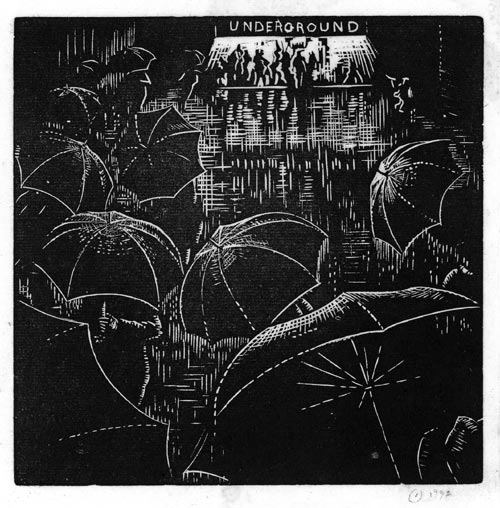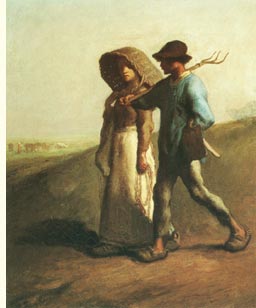The
Home Page Selection
If
you require further information on any
print featured here, please contact
us.
When
a print has been sold it will be marked
as Sold.
A
growing archive of selections
from previous Home pages is featured in
the
Home
Page Selection Archive |
|
See
also :
Click
on a thumbnail (left)
to link directly with the entry for that
print, or scroll down to view all the selected
prints from the current Home
Page.
Images
are not to relative scale (see stated dimensions) and also at only modest resolution. If you wish to view extracts of an image at higher resolution, please Contact us.
|
|
|
|

| |
WILLIAM THOMAS RAWLINSON S.W.E., F.R.S.A.
Liverpool 1912 – 1993 Redditch
A painter, but primarily a wood engraver, William Rawlinson trained at the Liverpool School of Art 1929 -1935, with a view to becoming a teacher. Having completed the courses in drawing and painting, he was awarded the College’s internal scholarship in design in 1931, the year he began relief printmaking, initially on lino blocks before progressing to wood blocks, his favoured technique. In 1932, he received a Senior City Art Travelling Scholarship. Drawings made during his 6 months of student travels in Europe would provide the subject for some of his later paintings and wood engravings.
He first exhibited at the Society of Wood Engravers in 1938, by which year he was also exhibiting at the Liverpool Autumn Exhibition, the Royal Cambrian Academy and the Royal Academy.
(Rainy night – entrance to
an Underground Station)
Stewart 167
128 x 128mm
Original linocut, 1932.
Dated in pencil and annotated by the artist
in the lower in the bottom margin “4th state”.
Printed in black ink on thin japan.
The block was not kept.
Never editioned; only 2 impressions are known to have been printed.
Sold
Though Liverpool at this date did have an underground railway, which went beneath the Mersey, this is more probably a London subject.
Return to top ^ |
|
|
|
|
|
ETHEL KIRKPATRICK
Clerkenwell 1869 – 1966 Harrow
Ethel Alice Kirkpatrick is said to have been born in Coldbath Fields Prison, Clerkenwell, where her father was at that time Deputy Prison Governor.
She attended the R.A. Schools and the Central School in London, and with her elder sister Ida, also an artist, the Academie Julian in Paris.
Of independent means the sisters visited such artists’ colonies as St Ives in Cornwall at the beginning of the 20th century and Ethel returned regularly over two decades to Walberswick, Suffolk; her first recorded visit having been 1897.
Ethel is best known today for her colour woodcuts.
Nesting Rooks
97 x 318 mm
Original colour woodcut, c1910.
Signed in pencil.
Printed on japan.
Some printing ink stains in the margins.
Sold
It has been suggested that the Nesting Rooks was cut at the family home in Harrow-on-the-Hill.
Return to top ^ |
|
|
|
|
|
PAUL PAESCHKE
Berlin 1875 – 1943 Berlin
A German Impressionist painter and printmaker, Paeschke trained at the Berlin Academy 1900-1906.
Brücke
Bridge
249 x 375 mm
Original drypoint with rockerwork, c1914.
Unsigned.
On cream wove paper.
Sold
(Waterloo Bridge, London)
Return
to top ^ |
|
|
|
|
|
CORNELIS BLOEMAERT
Utrecht 1603 – 1692 Rome
One of the three sons of Abraham Bloemaert, all taught by their father, Cornelis trained as a painter but practiced mainly as an engraver, a technique he learnt from Crispin de Passe.
Before he left for Italy, in 1630, Cornelis engraved a number of prints after his brother Henrik (1601-1672), of which at least three feature owls in an emblematic context.
An Owl on a Perch
Roethlisberger 7 ii/ii
169 x 123 mm
Etching with engraving c1625, after Hendrick Bloemaert.
Second (final) state with the addition of et ex (published by)
after Cornelis Bloemaert’s name.
A fine impression of this rare print. Trimmed just outside
the borderline on three sides and to the platemark at the foot.
Edge-mounted, with related defects.
A short ‘glued’ tear at the top edge.
Sold
Ex collection The Maxwell Macdonald family.
Just as hunters tied owls to poles as a lure to attract other birds, fools attract other fools.
The Dutch verse added to the foot of the plate translates as ...
‘You who are staring at this owl.
What do you see?
It is your brother
and you do not recognize him.’
There were many such Dutch sayings which used owls metaphorically to comment on human folly and the unwillingness to acknowledge it. Here you are not looking at yourself but at your brother, but you do not recognize him, even though he looks just like you, because you do not ‘see’ your own inherent foolishness.
My thanks to Ger Luijten for kindly interpreting the message in this engraving.
Return
to top ^ |
|
|
|
|
|
JEAN FRANÇOIS MILLET
Gruchy, Normandy 1814 – 1875 Barbizon
Though himself the son of a peasant, Millet only turned to painting peasant life just before he settled his family in the village of Barbizon, to avoid the cholera outbreak in Paris in 1849, when Barbizon was developing as an artists’ colony for naturalist landscape painters.
Millet had already made his first attempts at etching about 1847, probably under the auspices of Charles Jacques, his neighbour in Paris, before they both moved to Barbizon. It was the mid-1850’s before he etched further plates, at the urging of his friend, patron and promoter Alfred Sensier. By 1863 Sensier is finding a growing market for Millet’s etchings and sets up the Société des Dix (Society of Ten) to commission a plate which the ten members would co-own. They also would each receive a personally dedicated impression in the first state. Millet received an advance of one thousand francs to guarantee him the free time to carry out the etching. The resulting plate, Going to Work, was finished by the end of 1863.
Le Départ pour le Travail
Going to Work
Melot 19 v/vii, Delteil 19 v/vii
381 x 307 mm
Original etching, 1863.
The plate signed.
Fifth state of seven, with the addition of the three dots
in the lower right corner, after the removal of Delâtre’s
and Moureaux’s addresses.
Printed in brown ink, with plate
tone, on thin laid paper watermarked K Fr.
Slight pressure
cockling within the image.
Three short supported tears at the
sheet edges.
Sold
Ex collection N A Hazard (1834-1913) (Lugt 1975)
 A reworking of the theme of the painting, Going to Work, c1850-51,
now in the Kelvingrove Art Gallery & Museum, Glasgow. A reworking of the theme of the painting, Going to Work, c1850-51,
now in the Kelvingrove Art Gallery & Museum, Glasgow.
The monochrome etching, with its flattened landscape enhances
the emotive monumentality of the young couple and evokes
what has been called the ‘sad solemnities of toil’.
(The image was described as a brother and sister setting out to work
when the impression which belonged to the art critic and collector
Philip Burty, one of the Société des Dix, came up for sale in London in 1876.)
Millet’s largest and most powerful etching, carried out in a fluid masterly line
and the most carefully worked out of his plates. In addition to seven
preparatory drawings Millet etched a number of trial plates of details
such as the girl’s head and her arm.
Return
to top ^ |
|
|
|
|
|
|
|